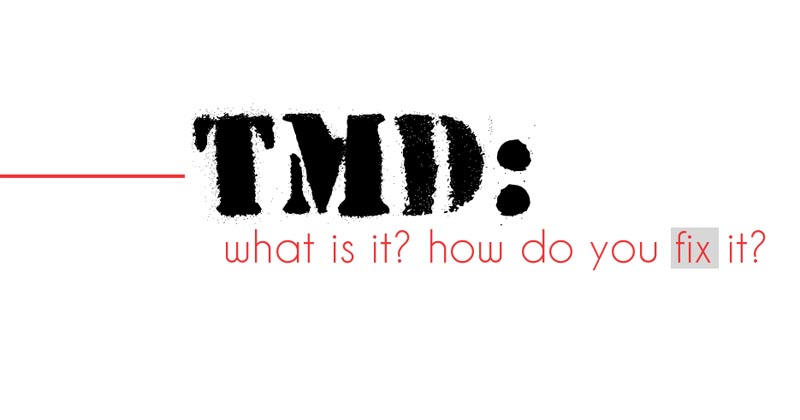TMD: What Is It, and How Does Your Dentist Fix It?
Have you ever experienced jaw pain? Maybe when you wake up in the morning you have tenderness in your face and problems opening your mouth, or maybe you have been hearing a clicking or popping sound when you chew. If you have experienced any of these symptoms you may have TMD, otherwise known as temporomandibular disorder.
The temporomandibular joint is the hinge that connects the jaw to the bones in the skull. The bones it connects to are the ones in front of the ear. This joint makes it possible for the jaw to move up and down and side to side. This allows for chewing, talking, and yawning to take place.
If you have ever experienced pain in that area than you may be experiencing TMD. While the cause of TMD is not certain, it is believed that activities such as grinding or clenching your teeth, arthritis, and stress are all causes of TMD.
There are many symptoms associated with TMD which typically affect people ages 20 to 40. You may have problems opening your mouth wide, experience pain or tenderness in the jaw, joint, or neck, and shoulders. Clicking and popping when chewing is another symptom along with swelling on the side of your face. Headaches, toothaches, and earaches are also common.
While TMD is a painful disorder that alters your day-to-day activities, the good news is that your dentist can help fix it. Here are three things a dentist might prescribe to treat TMD.
1. Medications
The right medication can make a huge difference in alleviating the pain caused by TMD. Often times a muscle relaxer might be prescribed to relax the jaw if you grind or clench your teeth. A dentist can also prescribe medications for pain or swelling if your symptoms are severe.
2. Splint or night guard
Relieving your TMD symptoms may be as simple as popping in a night guard before bed. Night guards and sprints help protect your teeth from clenching and grinding, this helps correct the bite. Ask your dentist if a night guard or splint is right for you. A night guard is for sleeping, while a splint is worn all the time.
3. Dental work
There are multiple procedures that your dentist can perform to ease the pain of TMD. A dentist can replace missing teeth, or add crowns, bridges, or even braces to help correct your bite.
Visit a dentist if you are having jaw pain and get a diagnosis and treatment.







